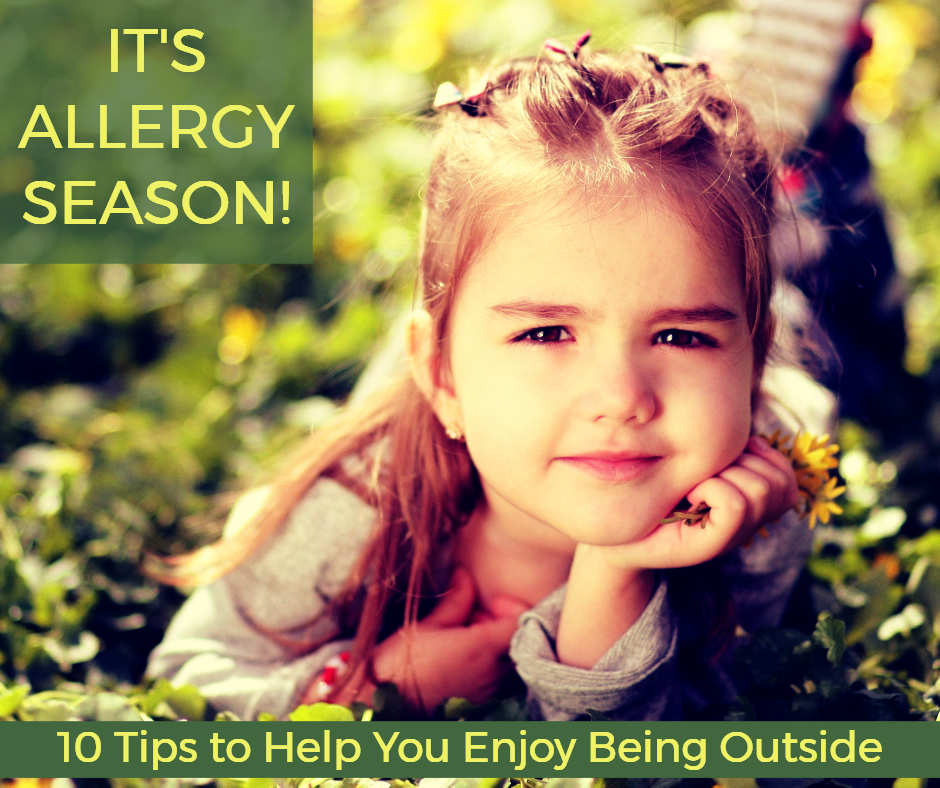
The warm weather of spring is here. As many are heading outside to play and smell the beautiful budding flowers, others cringe with thoughts of sneezing and wheezing. This time of year, for some, means the beginning of seasonal allergies and a condition some refer to as “hay fever.” One of the most common symptoms is a spring allergies sore throat.
Seasonal allergies can occur in the spring due to the pollen of flowering plants and trees, or in the fall usually from mold spores. Reproducing plants release tiny pollen particles into the air to be spread via the wind. These airborne particles can then easily enter the body and cause a reaction in those allergic to them and for those with lung problems, such as asthma. Seasonal allergies are characterized by symptoms of runny nose, irritated throat, watery eyes, congestion, sneezing and coughing.
The severity of symptoms is dependent on the type of allergens someone is sensitive to and the amount of that particular allergen in her environment. Various types of trees, grasses, weeds and flowers all release their pollens at different times in the year within different geographic areas. You may only be sensitive to one type of pollen or you could be sensitive to a combination of allergens. The only way to determine for certain which pollens are affecting you the most is by skin testing. During allergy skin testing, a drop of liquid allergen is injected under the skin and monitored for a positive red reaction site.
Although it is impossible to completely eliminate pollen in your environment, it is possible to minimize your exposure to these allergy triggers and increase your ability to enjoy this season. Follow these tips:
Keep the windows closed. Airing out your house at the first sign of warm weather is a great temptation, but a big no-no if you suffer from seasonal allergies. Do not invite pollen inside; instead use the air conditioning.
Avoid being outside between 5AM and 10AM. Pollen levels are often their highest in the early AM hours. Reschedule your morning walk to an afternoon walk in order to decrease your exposure.
Monitor pollen counts. There are many excellent websites you can use to monitor the pollen count in your area such as Pollen.com. Take advantage of low pollen level days to do outside activities.
Change your clothes/shoes. After prolonged outdoor exposure, pollen can stick to your clothes and body. Removing any contaminated items and taking a quick shower can reduce pollens effects on you and keep the pollen levels within your home low.
Change your air filters. No matter how careful you are some pollen will inevitably get into your home. It is the job of your air filter to remove allergens from the air inside your house; however it cannot do this job efficiently if the filter is already full of debris. On average they should be changed every 3 to 6 months depending on the brand of filter.
Be proactive with asthma and allergies. See your doctor about possible preventative treatments available to lessen the possibility of an asthma attack. Over-the-counter anti-histamine products can also be used prior to outdoor exposure to decrease your body’s response to pollen.
Pray for rain. Rain is your friend if you suffer from allergies. With each rain shower, pollen is cleared from the air. Use the time after a rainfall to do some of your outdoor activities.
Wear protective gear. Barrier protection is often called for to protect yourself against pollens, so put on those sunglasses if you have a tendency to get itchy eyes in the spring. Some allergens will get in your house, so take precautions when cleaning by wearing a mask to decrease exposure. You can also use a mask if you must go outside during high pollen times.
Wash bedding in hot water. Bedding has a tendency to hold on to a high amount of allergens. Washing bedding regularly in hot water will help alleviate dust mites as well as pollen.
Get a HEPA air cleaner. If the above suggestions do not decrease the level of pollens within your home, it’s time to look into a HEPA (high-efficiency particulate air) cleaner. These devices filter the air inside your house and remove numerous allergens.
Spring Allergies Sore Throat Treatment Plan
If your allergies have caused you to have a chronic sore throat, here’s a simple treatment plan to consider. (As always discuss with your doctor first)
- Decrease mucus production by blunting your bodies response to allergens. There are many medications on the market that can help with this including Claritin, Zyrtec, Allegra, Xyzal, Benedryl, and other anti-histamines. Those with high blood pressure should take care to avoid the versions of these medications with a decongestant (often noted by a -D on the package).
- Decrease post-nasal drip by stopping nasal drainage. Nasal corticosteroids are very effective and do not typically have the rebound side affects of other nasal sprays. Some examples are Flonase and Nasonex. Keep in mind these medications often take up to 10 days of continuous use to see improvement. If drainage turns from a clear to yellow-green color, you could be developing an infection and may require antibiotics to improve your symptoms.
- Sleep with your head elevated. This helps prevent drainage down the back of your throat while sleeping which in turn will decrease sore throat symptoms.
- Stay hydrated. The windy conditions of spring can often dry out the throat and nasal passages. Drink adequate liquids to keep your mucous membranes healthy.
GOT QUESTIONS? Sign up to my newsletter at the bottom of the page. Each month I take a subscribers’ question and answer it on the blog, in the newsletter, or on social media!
